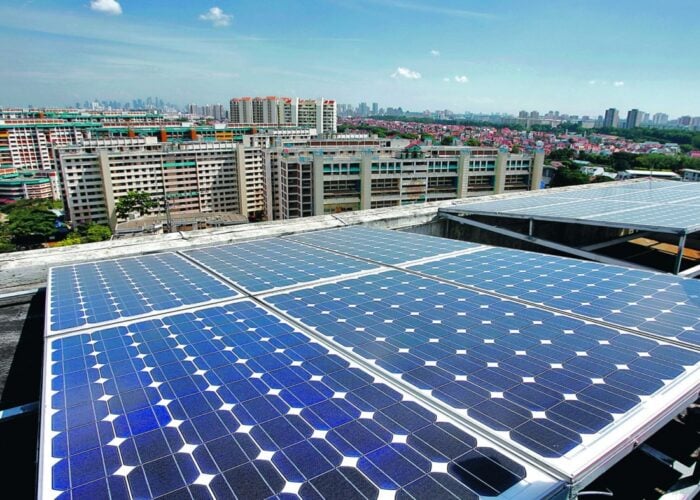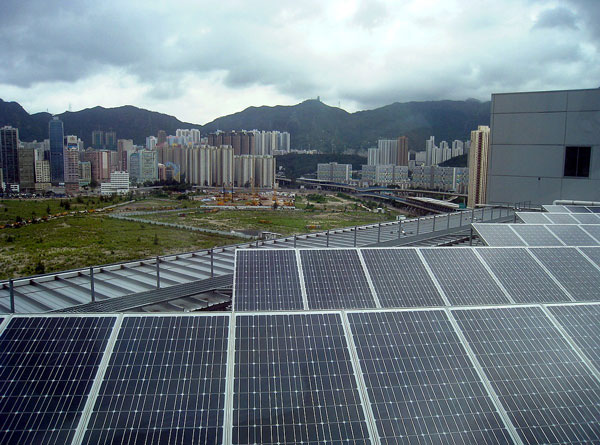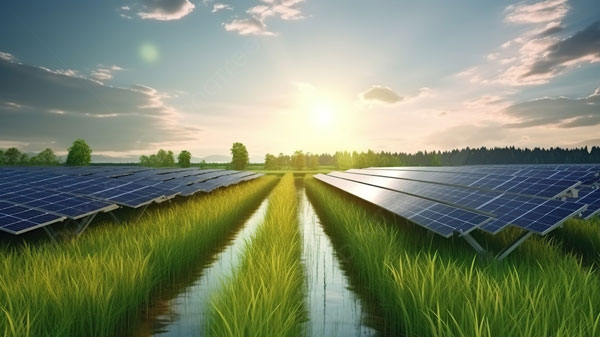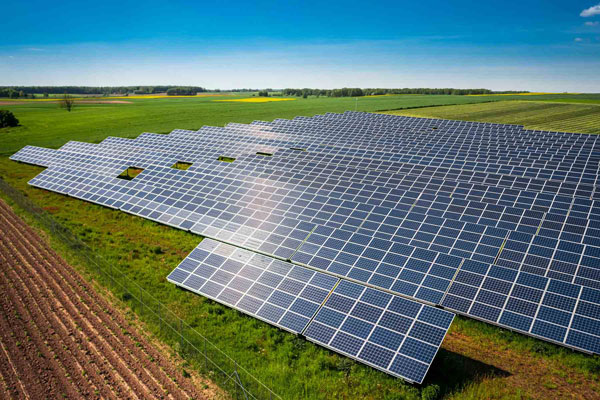Reflective coatings, ventilation, water cooling, regular cleaning, and monitoring can cool solar panels, lowering temperatures by 2-20°C and increasing efficiency by 10%.
Importance Of Temperature Control
Excessive heat has a critical impact solar panel operation efficiency. In fact, research reveals that a panel loses around 0.5% of its annual output for every degree Celsius above 25°C. In Arizona the drop in efficiency is likely to be even more than that. Page 7 of 100 In extreme conditions, solar panels can reach temperatures of up to 85°C causing their efficiency to fail up to 30%. The key to powering more from solar is great temperature control and longer panel life. Keeping the panels cool is essential for maintaining the maximum output and this is particularly important in hot climates, where this kind of excess heat can be caused by overheating the panels.Real-World
The impact of high temperatures on the efficiency of solar panels in real-world applications is well-documented. For instance a Nevada-based study found that solar panels are capable of operating a constant temperature greater than 35°C significantly decreased their efficiency. In response, they added cooling methods like reflective coatings and improved ventilation to reduce some of the heat, resulting in a 10% increase in overall energy during the hottest part of the summer.Data and Statistics
The effect of temperature on solar panel performance is not only logical, it is also practical. National Renewable Energy Laboratory (NREL) data says solar panel output can drop between 10-25 percent for long periods during the hottest weather of the year, especially in the hot and sunny parts of the southwestern U.S. This is why an efficient temperature control solution plays a crucial part.Long-Term Effects
Also, prolonged exposure to high temperatures can speed up the deterioration of solar panels. However, computers at an IEA lab where solar panels that have been under extreme heat for years were compared with new control modules, have reportedly noticed a loss of efficiency as well as possible physical damage (microcracks) in the photovoltaic cells, according to the Guardian. This further highlights the need for operations within optimal temperatures to extend the life and performance of solar farms.Financial Implications
Temperature control is not only about being efficient, it is also about protecting our investment in solar technology. And to us, as solar panel installations require an upfront capital expenditure, optimally cooling to make panel work-efficient can translate into actual cost saving and higher ROI in the long term.
Effective Cooling Techniques
Reflective Coatings
Reflective coatings that reduce the temperature of the solar panel by more than twice as much as no coating at all. Such coatings can decrease panel temperatures by as much by 5°C, resulting in significantly increased efficiency. For example, a study in California found that reflectively coated solar panels had an 8% increase in energy production during the sunny summer months in peak sun hours over an uncoated solar panel. Introduction of the reflective surface will be able to reflect some sunlight and hence reduce the amount trapped by the cell that causes heating allowing the operating condition to be remain in optimal state.
Heat Sinks
Solar panels do not generate electricity as efficiently if they are hot. Heat sinks are good for pulling the heat away. Heat sinks can lower the panel temperature by a further 3 to 5°C, which helps the panels stay within the ideal temperature range even in hot weather. For example, massive heat sinks were added to a solar farm in Nevada that saw a 7% increase in power generation, just from the hottest time of the year now cooling the panels & generating more power. They are highly effective in spaces with high environmental temperatures where historically cooling methods fell short of the target.
Ventilation Systems
In this post I would like to convince you that proper ventilation is important to keep the temperature down on solar panels. Spacing panels a few centimeters away from the mounting surface has cooling properties and can decrease panel temperature by 2-4°C, but solar farms in Texas go even further, adopting elevated mounting systems to allow airflow beneath the panels, which leads to a 5% increase in annual energy production. Further, passive airflow mechanisms, i.e., slotted mount or tilted installation, direct natural wind into the rode/pole structure for better cooling.
Water Cooling
If the temperature of the solar panel becomes hotter than optimal, the water cooling will lower, to boost the efficiency of the unit to a certain extent. The temperature of the panels can drop by 10-20°C by spraying water, which greatly increases their efficiency. There are large-scale solar farms in India that have automatic water spraying systems to cool their modules (to make them last longer) and during summer months when peak heat may reduce efficiency by as much as 17%; this brings the efficency lost down to 2% and increases energy production by 15%, this was published in 2018 in, of all places, Forbes. Regular sprays of water aside from cooling the panels keep them clean which is important as dust buildup can decrease efficiency levels.
Phase Change Materials
One such innovative is phase change materials (PCMs) that absorb an excess heat and store it. PCMs can decrease the temperature of the solar panels by as much as 10 degree Celsius, saving it from turning inefficient, even in extreme heat. PCMs are materials that can absorb much heat during a state change, from solid to liquid, and in doing this, they prevent the panels from overheating as the temperature soars. When they get cold, they go back to solids - that is, they give off the stored heat. Pilot projects using this approach have shown progress, with performance gains of over 50 percent in energy output while failing to resolve crucial issues, including scale up.
Implement Cooling Airflow
Elevated Mounting Systems
Trackers and tilt-mount systems are used more often to increase air flow around solar panels. Where possible, elevating panels off the roof/ground by only a few inches allows a space for air to flow underneath — this can help to reduce panel temperatures by 2-4°C and is widely used in solar farms. Among them, a solar Array in Texas said that it increased annual energy production by 5% by using elevated mounting system. The height improves natural convection and further contributes to the heat dissipation.
Passive Airflow Designs
Slotted mounts allow air to flow beneath the panels, and tilted systems increase the face of the panel which interacts with the wind. The tilt of the panels not just ensures that they have the best exposure to sunlight, but also enables better air circulation, reducing the temperature by about 2-3°C which makes them great for coastal solar projects where cross winds can yield extra 10% in output.
Ventilation Gaps
Interspersing rows of solar panels with ventilation gaps can improve airflow dramatically. The wind passes through and around the panels due to strategically placed gaps, thus reducing heat from the panels. A study in Arizona found that solar arrays with gaps could reduce operating temperatures by up to 4°C over tightly packed configs. This design is especially useful in utility-scale solar farms because it can accumulate heat.
Use of Bifacial Panels
Bifacial solar panels can intake light from sun both sides and are often mounted that permit to let airflow below the panels. Installed on raised racking systems, these panels allow air to flow across the entire top and bottom sides. The two-way exposure not only improves power generation but also improves cooling efficiency. Although the majority of commercial PV systems employed monofacial panels, enhanced airflow had been found to improve cooling, allowing bifacial panels used in a project in Nevada to produce 6% more electricity.
Strategic use of natural ventilation
Solar panels are positioned to take advantage of natural wind patterns to help with cooling, using natural ventilation strategies. Example: Mounting panels on hilltops or open fields with steady wind has cut temps by 3-5°C, and it has even improved performance noticeably (at a solar farm in New Mexico) during the hottest months of the year, because panels are designed for approximately 25°C as optimal temperature.

Use Water To Manage Temperature
Spraying Systems
There may be other modes for cooling solar panels, but using water-spraying systems are the most beneficial of all. By reducing panel temperatures by 10-20°C, automated systems can boost efficiency dramatically. Large solar farms in India use a water-spraying system that automatically sprays water during peak heat hours, helping generate 15% more energy. In addition to cooling the panels, the water spray also clears the surface, removing dust and debris that might otherwise reduce performance.
Drip Irrigation Systems
It may sound like a simple idea, but water is a great asset if a drip irrigation system, widely used in agriculture, is revised for the cooling of solar panels. Pivot-stream irrigation and drip-tape irrigation systems systematically dispense a measured amount of water directly to the panel surface to ensure a continual reduction in surface temperature. Drip systems in agricultural solar installations have been demonstrated to lower temperatures up to 15°C and is especially useful in some areas that face scarce water resources since it uses much less water than alternative cooling methods while still being effective.
Evaporative Cooling
Evaporative cooling uses evaporation to naturally lower the temperature of the panels. When water is leftovering sprayed over these panels it evaporates, the heat of the complex form evaporating the moisture, which absorbs the heat in the process of evaporating still the moisture moisturises, cooling the panels significantly. It has been shown that the temperature could be lowered by 10-15 in evaporate cooling, this technique is very useful in the dry arid regions where the evaporation rate is high decreasing the panel efficiency and hence the energy output.
Integrated Cooling Systems
Combine water cooling with other technologies to boost performance using integrated cooling systems. These may include thermal storage tanks, which help capture water for recapture of later, or even hybrids, which alternate from both air and water cooling. Project in California also found that an integrated cooling system that uses recycled water boosted energy output by 20 percent in summer months. These kinds of systems work well for big solar farms that need all the efficiency they can get.
Some advantages of cleaning and maintenance
Only a very small amount of water is used for cooling the panels, which is also useful for them to remain clean. Even a small amount of dirt, dust, or bird droppings can greatly decrease a solar panel's output. Water spraying autonomous cleaning systems can also help keep modules clean and therefore operating at peak productivity. As an example, when water cleaning was conducted according to a standard once every 15 days in an UAE project, a 5-10 % increase in energy production could be seen, compared with those not implemented with water cleaning.
Maintain Optimal Performance
Regular Cleaning
Solar panels require regular maintenance to perform to the best of their ability. If not cleaned regularly, these things can cause reductions in efficiency up to 30% in solar panels due to dust, dirt, and bird droppings. For example, a study in the Middle East showed that solar panels cleaned bi-weekly generated 20% more energy than those just cleaned a few times a year. The automatic cleaning systems could help keep the panels dirt free meaning less labour was needed to keep the system running.
Monitoring Systems
Real-time Data of Solar Panels Monitoring Systems With sensors and software that are able to identify deviations in temperature, shading issues, and electrical faults. They offer immediate action to fix existing problems and avoid lasting damage and performance declines. An example of this would be a solar farm in Nevada that has comprehensive monitoring to detect overheating and shading issue, which resulted in a 7% gain in overall plant efficiency within one month of alerting the problems.
Preventive Maintenance
Regular inspections and minor repairs are all part of a preventive maintenance routine that keep solar panels running properly. By running routine checks, you can then see which such issues (e.g., loose connections, corrosion, physical damage) are arising. Dirty panels, for example, can reduce output by 15% based on a study of solar installations in California and preventive maintenance increased annual yield by 10%. Regular maintenance visits can also catch small problems before they turn into large ones.
Temperature Control
It is very important to keep the temperatures right in order for solar panels to work at their peak functionality. Panel efficiency can drop by as much as 10% with high temperatures. These cooling methods include for example, water spraying, ventilation, and reflective coatings and are able to effectively solve this problem. Active cooling methods included with solar installations in Arizona showed a 15% power production boost on the hottest months.
Optimal Placement
Positioning of solar panels is another factor affecting the performance of the solar panels. You want to get your panels in a place where they have the most sunlight without being blocked by anything throughout the day. They can also be used in determining the perfect placement despite the time of day and year by using tools such as solar pathfinders. On flat rooftops, installations with the best tilt angle and orientation produced between 10 and 20% more energy over the course of the year, compared with flat installations.



